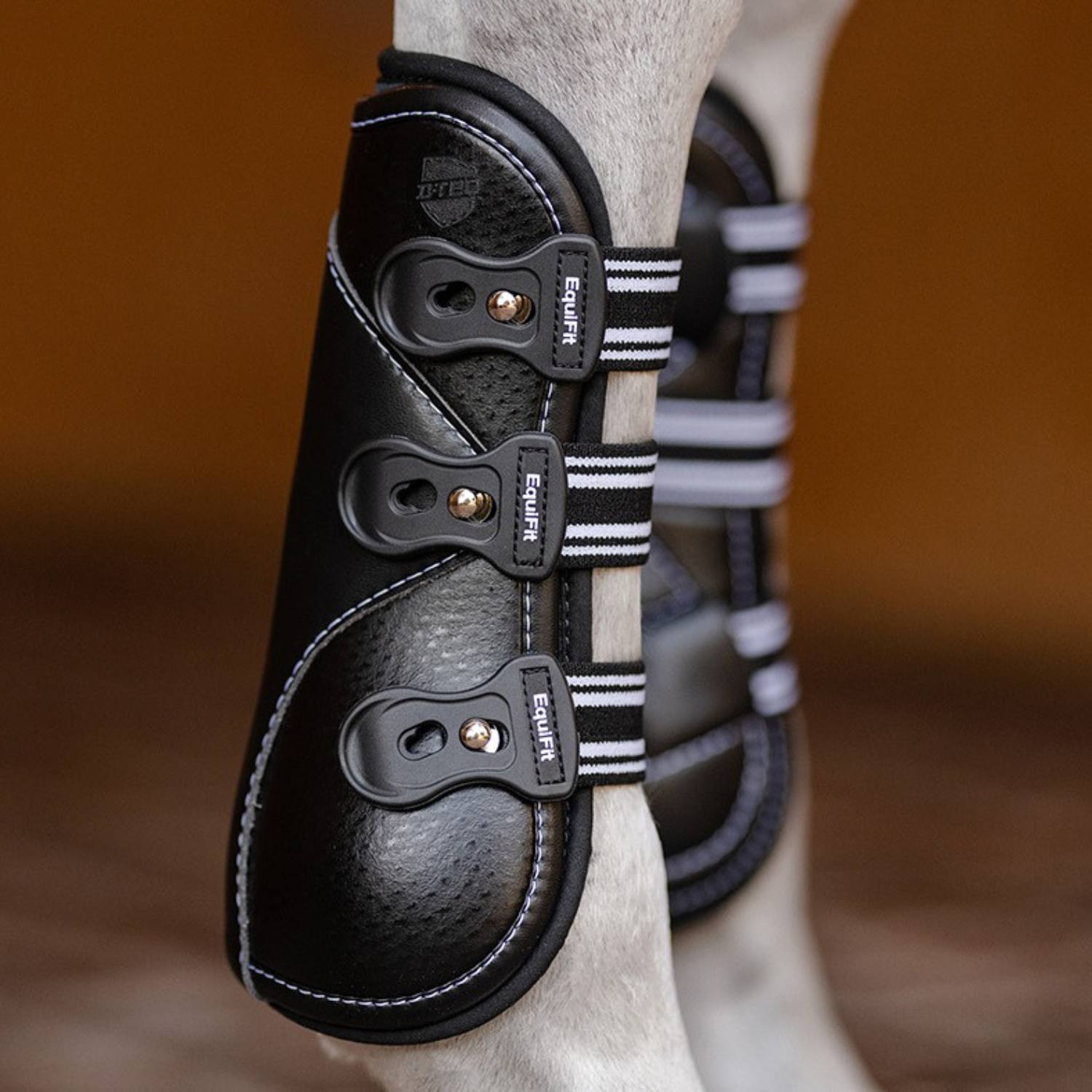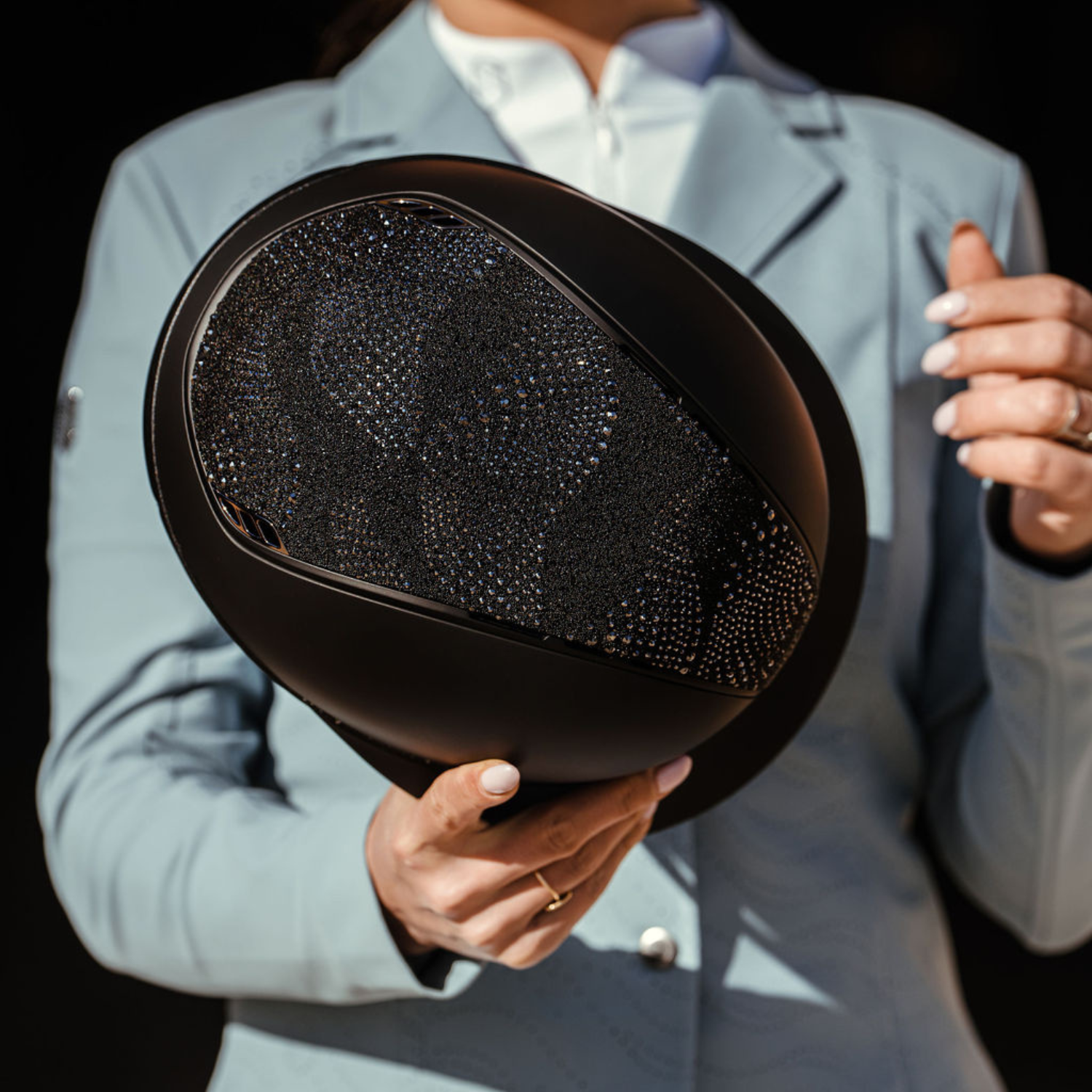
Choosing the right boots for your horse
Finding the right boots for your horse is vital to ensuring his leg protection & safety. However, with the numerous options available, it can be challenging to navigate which boots are appropriate for your horse & his specific needs. Your horse’s primary type of exercise or activity is the first factor to consider when choosing his boots.
All-purpose boots are ideal for protecting your horse's lower legs during flatwork & turnout. This easy on/off style of boot helps shield against knocks & bruises caused by interference (when the hoof strikes the adjacent limb during motion), which is a common challenge with athletic horses, those with big strides, or those who tend to be exuberant during turnout.
Crafted from soft, flexible materials, these boots provide ample coverage of the lower limb while being comfortable for day-to-day use. Additionally, this style of boot is often used as an alternative to polo wraps, as they are easier to put on correctly, ensuring a safe fit.
Within the EquiFit lineup we offer two thoughtfully designed styles of all-purpose boots:
OVERREACH BOOTS
If your horse tends to overreach (strike the toe of a hind foot against the heel or quarter of the forefoot), then bell boots may also be recommended for turnout or riding. Also known as overreach boots, bell boots are designed to cover the front feet, starting from the lower part of the pastern, over the coronary band, & down to the bottom of the heel bulbs.
JUMPING BOOTS
When tendons & ligaments are under strain from extension & load bearing, they may be even more susceptible to devastating injury from impact & interference than they are during other moments of exercise. This is why the right protective boots are imperative for jumping horses.
Boots designed to protect horses’ limbs while jumping are generally known as tendon boots for the front limbs & fetlock boots for the hind limbs. These are sometimes also referred to as an “open front” style, which references how the boot is designed to protect the back & sides of the limb only.
These boots are specifically designed with a rigid outer shell & more impact absorbing material. To ensure the optimal fit for your individual horse’s leg conformation, the best tendon & fetlock boot designs provide technically advanced liner material that helps reduce the risk of pressure points, combats microbial growth, encourages heat transfer & more.
Selecting well designed boots is only part of the equation; ensuring the right fit for your horse is equally crucial.
Here are some guidelines to check the fit of your horse’s boots:
Overall Fit: Boots should fit snuggly to ensure they stay in place without impeding your horse’s movement. A loose fit may cause the boot to slide out of place & will allow dirt & debris to work under the boot, which can cause rubbing & irritation.
Length: Pay attention to the length of the boot to ensure adequate coverage & protection for the vulnerable areas of your horse’s leg. Not too short that your horse’s tendons, ligaments and fetlock joint are exposed, but not too tall that the boot impedes joint motion.
Comfort: Look for any signs of rubbing or chafing that may indicate an ill-fitting boot. Abnormal wear on the shell or the liner of a boot after a few uses can be an indicator of fit issues. (As a side note, avoid nesting any hardshell boots inside each other when storing them, as this may overstretch one boot more than the other over time. Check out our Hanging Boot Organizers to solve this problem).
Pressure Points: Observe any pressure points or tender areas, as this could be a sign of a poor fit. Adjustments may be necessary to improve your horse’s comfort & the boot’s performance.


